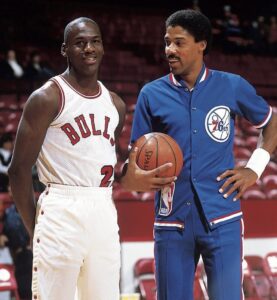When the flicker of a reading lamp casts silhouettes across a child’s bedroom wall, and the faintest creak of a floorboard sets the heart racing, we are transported back to the spine-tingling sensations that defined many of our youthful reading experiences. At the center of this nostalgia sits “Goosebumps,” the beloved children’s horror series written by R.L. Stine. But behind each shocking twist and ghostly apparition was not just Stine’s pen but also the brush of Tim Jacobus, the original illustrator who gave Goosebumps its unforgettable visual identity.
Now, decades later, Jacobus is offering something remarkable: signed prints of his original Goosebumps cover art. This initiative is more than a simple nostalgia conjure. It’s a celebration of the genre, an ode to the power of illustration, and a testament to the enduring cultural impression of a series that dared kids to be afraid — and love it.
The Fear Factor: Illustrating the Impossible
For many fans, the Goosebumps covers are as memorable as the stories themselves. Tim Jacobus, with his uncanny ability to make the macabre almost skittish, created images that both frightened and fascinated young readers. His use of hyper-saturated colors, otherworldly lighting, and distorted, exaggerated figures set the tone before even a single page was turned.
If ever it was a ventriloquist dummy with an evil gleam in his eye (“Night of the Living Dummy”) or the eerie allure of an amusement park sign promising terror (“One Day at HorrorLand”), these covers were portals into a world where the ordinary became the extraordinary. Jacobus’s work balanced horror and humor in a way that captured the spirit of Stine’s writing uniquely.
Art as a Gateway
The Goosebumps series achieved unparalleled commercial success in the 1990s, selling over 400 million copies worldwide. While Stine’s fast-paced, twist-laden storytelling stance to a critical role, the covers often served as the initial hook. Children would crowd around bookstore shelves, drawn by the otherworldly images before they even knew what the story inside held.
Jacobus’s ability to evoke fear, curiosity, and excitement in a single illustration turned Goosebumps books into a rite of passage. The covers were small but powerful canvases of imagination, inviting young readers to confront the unknown with a shiver and a smile.
The Collector’s Dream: Signed Prints
Today, as nostalgia surges and collectors seek tangible connections to their past, Jacobus has stepped forward to offer signed prints of his most iconic cover art. These aren’t just glossy posters or mass-produced memorabilia — they are carefully reproduced artworks, each bearing the personal signature of the man who brought countless nightmares to life.
For collectors and longtime fans, owning a signed print is akin to owning a piece of one’s childhood. It elicits the emotional connection to Goosebumps to transcend the pages and become an enduring piece of art on a wall. Whether displayed in a home library, a retro-themed game room, or an art gallery, these prints serve as reminders of the joyous terror that Goosebumps introduced into so many lives.
Reviving the Aesthetic
The imagery showcased in Jacobus’s prints revives a distinct visual aesthetic that is unmistakably 1990s. Vivid purples and greens, glowing spectral lights, and surreal environments define these pieces. In an era dominated by digital illustration, Jacobus’s traditional airbrushed approach feels both vintage and refreshing.
His work embodies the tactile joy of pre-digital book culture. Each image, crafted without shortcuts, encapsulates the care and patience of an artist fully immersed in his medium. As modern illustrators lean into sleek minimalism, Jacobus’s prints stand as a celebration of maximalism — a refusal to pare down the bizarre, the weird, and the wonderful.
The Cultural Echo of Goosebumps
Beyond the shelves and book fairs, Goosebumps seeped into wider culture. The series spawned television adaptations, video games, merchandise lines, and even blockbuster movies starring big names like Jack Black. Yet, through all these iterations, the original covers remained iconic.
Jacobus’s illustrations served as a visual language for a generation. They communicated a sense of high-spirited danger that felt exclusive to kids — a secret, thrilling universe accessible only through a Goosebumps book. Today’s adults, many of whom grew up reading Goosebumps, find themselves drawn to this art as they search for objects that anchor them to simpler, if spookier, times.
The Art of Fear and Humor
The genius of Jacobus’s covers lies in their balance. Too frightening, and they might have driven young readers away. Too silly, and they would not have held the same thrilling promise. Jacobus mastered the middle ground — creepy but not traumatizing, funny but not ridiculous.
This nuanced approach is part of what makes his signed prints so compelling today. They capture not just an image but an emotional state, a delicate blend of giggles and gasps. As an art form, this is a rarity, and it highlights Jacobus’s skill not just as a technical illustrator but as a storyteller in his own right.
The Modern Collector’s Scene
We live in an age where retro collecting has become mainstream. Vinyl records, classic video game cartridges, and vintage toys all command high prices and fierce loyalty. Goosebumps prints fit neatly into this culture.
Owning a signed Jacobus print is not merely a display of nostalgia; it is a statement of taste and identity. It communicates an appreciation for artistry and a love for narratives that don’t take themselves too seriously while still delivering emotional impact.
For some, these prints might serve as an anchor to their childhood bookshelf. For others, they become conversation pieces that bridge generations, prompting stories of summer reading marathons and flashlight-lit sleepovers.
Tim Jacobus: The Artist Beyond Goosebumps
While Jacobus is inextricably tied to Goosebumps, his career extends far beyond. He has illustrated numerous other book covers, contributed to advertising campaigns, and explored personal art projects. However, it is Goosebumps that remains his crowning jewel — a body of work that brought his artistic philosophy to millions.
Through his decision to release signed prints, Jacobus not only acknowledges this legacy but actively embraces it. He reconnects with an audience that perhaps hasn’t held a Goosebumps book in years but still carries those illustrations somewhere deep in their psyche.
A New Kind of Horror Storytelling
In a world dominated by screens and rapid consumption, the tangible nature of these prints is almost revolutionary. They ask us to pause, to look closer, to feel again the chill that once ran down our spine.
Moreover, they introduce a new way of experiencing horror — not through jump scares or hyperreal effects, but through the quiet, suggestive power of a static image. Each print invites viewers to imagine their own stories, to fill in the spaces with their own fears and fantasies.
Looking Ahead
What does the future hold for Goosebumps and its visual legacy? With R.L. Stine still writing and reboots continually in the works, the franchise shows no signs of fading. But no matter how many new stories emerge, the original covers will remain touchstones.
As Jacobus continues to share his art, he ensures that a new generation of fans — and perhaps their children — will discover, cherish, and reinterpret these images. In doing so, he bridges decades, genres, and artistic movements.
Conclusion
The decision by Tim Jacobus to sell signed prints of his Goosebumps cover art is a gift to fans and collectors alike. It is a chance to reclaim a piece of a cultural phenomenon that defined an era and shaped countless imaginations.
These prints are more than nostalgic décor; they are artifacts of a time when kids dared each other to turn the page, to enter the haunted house, to see what lurked in the shadows. Through them, Jacobus invites us once again to say those magic words: “Reader beware… you’re in for a scare.”
No comments yet.







